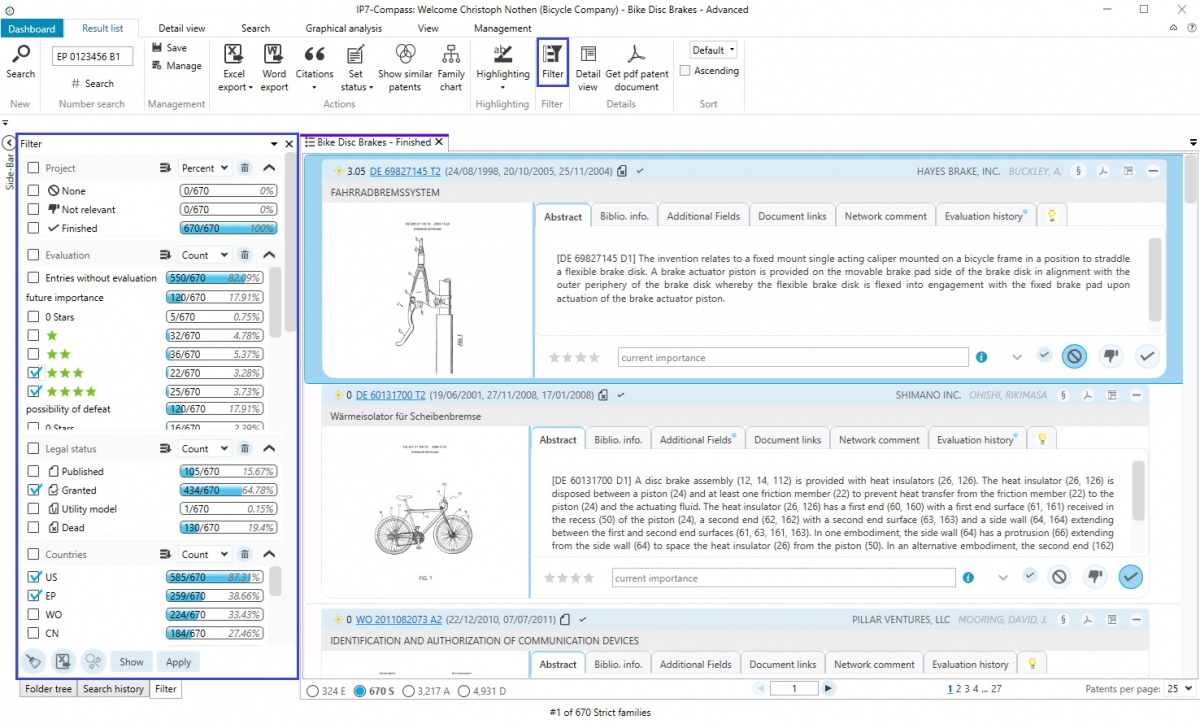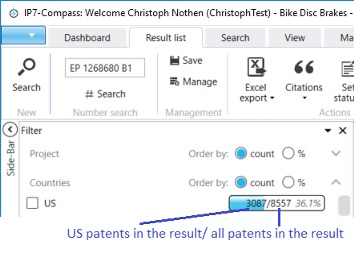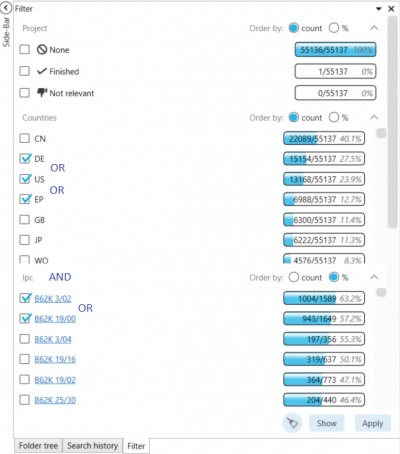EN:Filter
Using the filter, the current result can be analysed and limited.
The following information is analysed:
- Status (unread, not relevant, OK)
- Evaluation
- simplified legal status
- Countries
- IPC/CPC Classes
- automatic grouped applicants
- Applicant
- Inventor
This way, the following questions can be answered:
Which applicants/countries/classes are the most prevalent in my result?
How many patents in my result have not been processed yet (unread)?
Utilization
The filters can be opened using the menu item "Filter".

Now, the desired information can be selected.
Using the "Apply"-button the current result list is filtered using the selected information, e.g. limit to specific countries.
Using the "Show"-button all patents containing the selected information are searched/displayed without considering the result.

- open selected information in a new search

- export filter to Excel
(only the opened values are exported)

- deactivate applied filter, display original result
Amount/Percentage
For status, countries and simplified legal status the following rule applies:
Amount of all US patents in the result/amount of all patents in the result
Next to it you can see the percentage (3087 are 36,1% of 8557)
For IPC/CPC, applicant names and inventor names the following rule applies:
Amount of all patents in the result with the respective class/amount of all patents in the IP7 database with the respective class.
Ways of linking
The information selected in the filter is linked in the following manner:
The grouped information is linked with AND while within a group the information is linked with OR.
(DE OR US OR EP) AND ("B26K 3/02" OR "B62K 19/00")
Simplified legal status
When evaluating the simplified legal status, the following should be noted.
The simplified legal status is based on the application.
If a filter is applied to a result, which is based on the unit strict or extended family the following priority/order applies:
- If a family member is „granted“, the family is considered „granted“.
- If no family member is „granted“ and one family member is „published“, the family is considered „published“.
- If no family member is „granted“ or „published“ and one family member is a „Utility Model“, the family is considered „Utility Model“.
- If all family members are „dead“, the family is considered „dead“.
If the unit is based on the document, the following rule applies:
If the application is „dead“, all documents of this application are viewed as “dead”.
Otherwise, publications (A-documents) are considered "published" and classifications (B-documents) are considered "granted".



